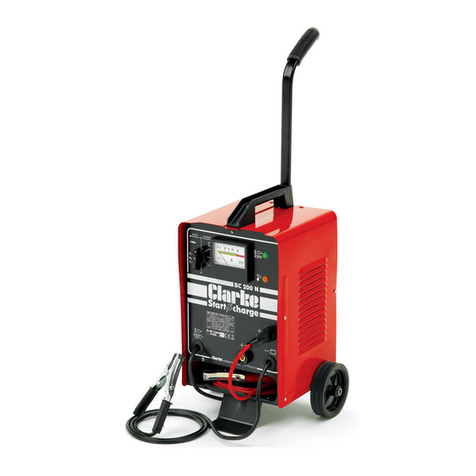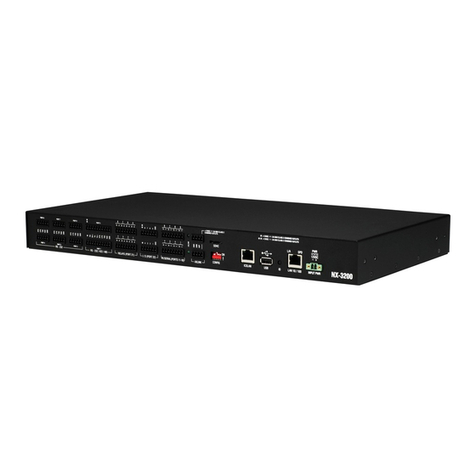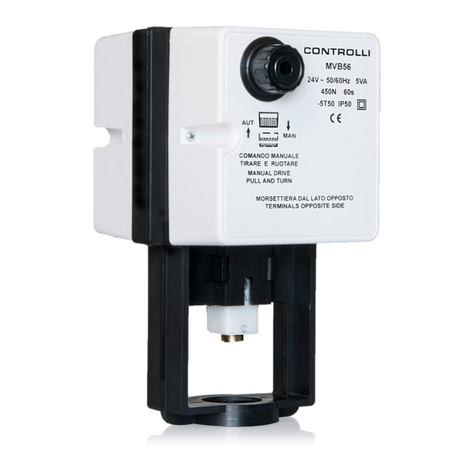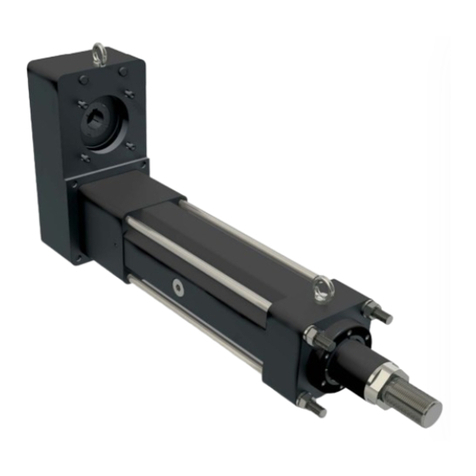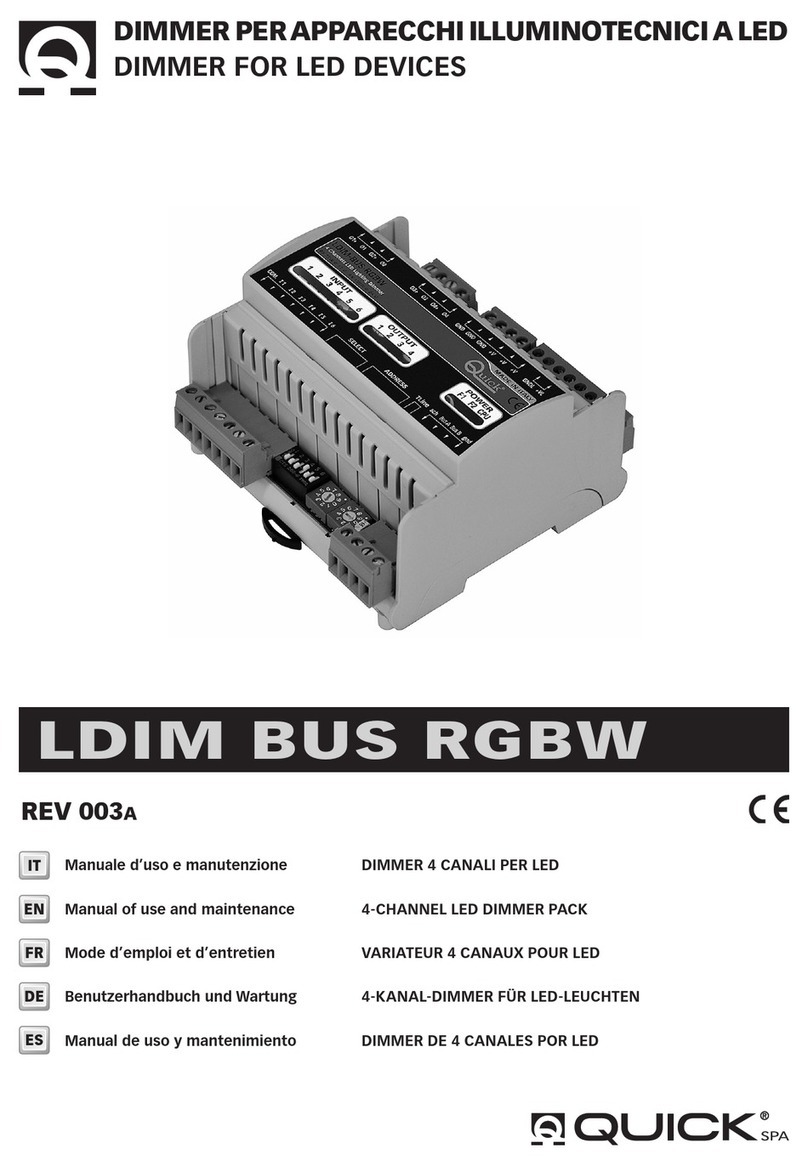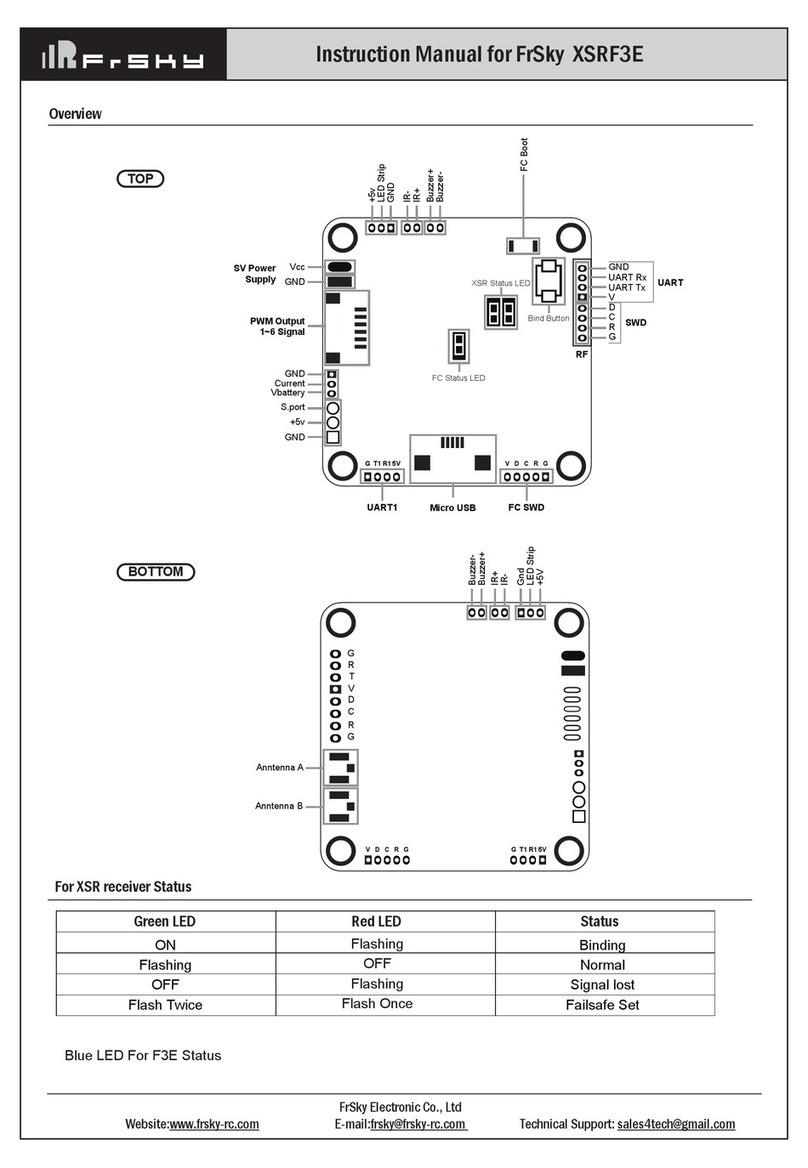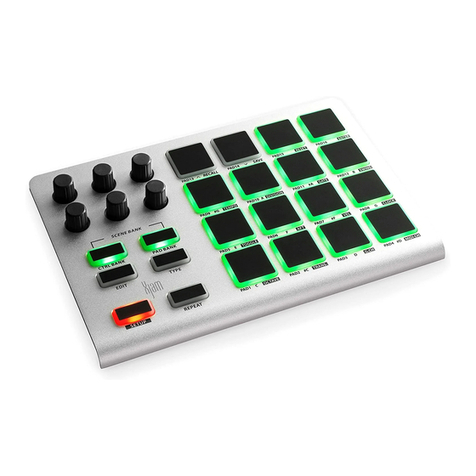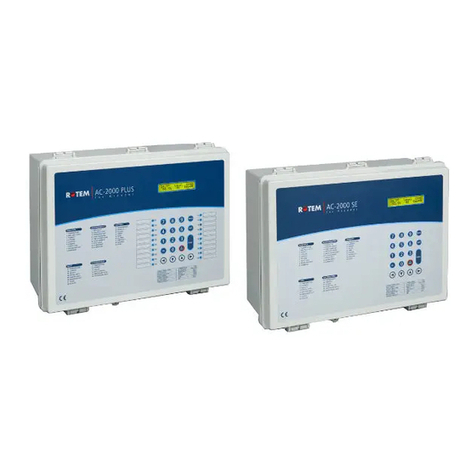Electronic Systems Design 110100-A Specification sheet

Page 1 of 15
ESDI Model 110100-A
MDB MultiPrice Water Vend Controller
Operation and Installation Manual
(Also see Programming & Service Manual)
WARNING ! ELECTRICAL SHOCK HAZARD !
AUTHORIZED PERSONNEL ONLY.
EXPOSED 120 VAC ON CIRCUIT BOARD.
THE CIRCUIT BOARD HAS MANY EXPOSED AREAS
THAT ARE AT 120 VAC. CONTACTING ANY OF THESE AREAS
CAN CAUSE BODILY HARM OR DEATH.
DISCONNECT POWER BEFORE SERVICING
AND MAKING ANY CONNECTIONS
December 01, 2020
By: M. A. Stern
Electronic Systems Design, Inc.
1010 North Maclay Ave., San Fernando, California 91340 USA
Phone: (818) 365-0864 Fax: (818) 365-1308 Web Site: www.esdi.net

Page 2 of 15
Table of Contents
OPERATING INSTRUCTIONS & FEATURES
1.0. General Description: Page 4
2.0. Controller Features: Page 4-5
2.1. Maximum Run Timer
2.2. Metered or Timer Controlled Vend
2.3. UV Flush Options
2.4. Pause Option
2.5. Bottle Rinse Option
2.6. Door (Nozzle Cover) Option
2.7. Lockout Option
3.0. Modes of Operation: Page 5-6
3.1. Water Vending Machine –The Basic Machine
3.2. Water Vending Machine –With Bottle Rinse Feature
3.3. Water Vending Machine –With Start / Pause Feature
3.4. Water Vending machine –With Door Feature
4.0. Payment Transaction: Page 6-8
4.1. Credit Accumulation
4.2. Display Activity
4.2.1. Idle State
4.2.2. Switch Echo
4.2.3. Vend Process
4.2.4. Change Payment
4.2.5. Use Correct Change LED
4.2.6. Power-Up and Reset Initialization
4.3. Internal Vend and Cash Counters
4.4. Free Vend
4.5. Switch Selections
INSTALLATION & WIRING
5.0. Electrical Specifications: Page 8
5.0.1. Coin / Bill Acceptor Interface
5.0.2. Relay Outputs
5.0.3. Water Sensor Interface
5.0.4. Vend Accuracy / Repeatability
5.0.5. Power Requirements
5.0.6. Circuit Board Assembly Size
5.0.7. Operating Temperature
5.0.8. Storage Temperature
5.0.9. Relative Humidity
5.1. Inputs: Page 8-10
5.1.1. Flow Meter Input
5.1.2. Low Water (Low Pressure) Input
5.1.3. Lockout Input (UV Shut Down)

Page 3 of 15
5.1.4. Vend Switch Input
5.1.4.1. Vend Switch with Pause Option
5.1.5. Bottle Rinse Switch Input
5.1.6. Selector Switch Inputs
5.1.7. Power Input
6.0. Outputs: Page 10-11
6.1. Pump Relay Output
6.2. Credit Lamp Relay Output
6.3. Bottle Rinse Valve Output
6.4. Door Relay Output
7.0. Connectors: Page 11-12
7.1. TB1 Control Inputs
7.2. TB2 Control Outputs
7.3. TB3 Power Input and Output –24VAC
7.4. Display Board
7.5. J5 Remote Display Board (Optional)
7.6. J3 Comm Port (Optional)
7.7. TB11 Slave Board Interface
SETUP & PROGRAMMING
8.0. Switches & Indicators: Page 12-14
8.1. Reset Switch
8.2. Free Vend Switch
8.3. No Vend Switch
8.4. Program Switch
8.5. Calibrate Switch
8.6. Vend Quantity Calibration Procedure
8.7. Program Mode
8.8. Power Indicator
8.5. System Status Display
9.0. Options (DIP Switch Selectable): Page 15
9.1. Flow Meter/Internal Timer Selection
9.2. UV Flush Cycle Option Enable
9.3. Rinse Bottle Option Enable
9.4. Door Option Enable
9.5 Pause Mode Option Enable
9.6 Lockout Mode
10.0. Trouble Shooting:
See separate ESDI Model 110100 Programming and Service Manual
Radiated Frequency Protection:
It is recommended that the controller board be shielded from radiated frequencies using a metal
cover. It is further recommended that service personnel or persons gaining access to the
internals of the machine, observe proper ESD control measures to prevent damage to the
machine. It may be necessary for the OEM to place a line filter in the machine if external or
internal sources cause conducted noise levels.

Page 4 of 15
MDB MultiPrice Water Vend Controller
ESDI Model 110100A Installation & Operation Manual
Operating Instructions & Features
1.0. General Description:
The ESDI Model 110100A MDB MultiPrice Water Vend Controller is an electronic assembly that
controls all of the functions necessary to operate an unsupervised bulk water vending machine. It
is designed to vend six (6) volumes of water, each having its own price. The six volumes are
easily set by the user during a calibration procedure. The Model 110100A interfaces to any
payment device that is in compliance with NAMA's "International Multi-Drop Bus Interface
Standard" (October 19, 1993), such as the COINCO 9302-GX coin changer, bill acceptors,
prepaid cards, and credit cards.
A display provides visual feedback to the customer through a four digit 7-segment LED’s, and two
discrete LED's that indicate "Use Correct Change", and "Make Alternate Selection". This display
is on a separate circuit board that mounts to the front of the machine.
An additional single digit display located on the ESDI 110100A control board provides feedback to
the technician on the operation and status of the controller.
The ESDI 110100A is expandable up to 12 products, and with the use of additional water vending
slave boards, can control up to 4 vend stations using a single coin mech and bill acceptor. Each
slave board vends an additional three products, so the 12 inputs can be grouped as 4 vendors,
each vending 3 volumes of water. Please see data sheet or web site for a variety of vending
possibilities & options.
2.0. Controller Features:
2.1. Maximum Run Timer:
The controller has an internal maximum run timer for the water vending only. It is factory set to
approx. 90 seconds beyond the normal vending time. If this time is exceeded, the controller will
stop vending, go "Sold Out", and will not accept coins. The Status Display will indicate "E". A
manual reset (power off, wait 5 seconds, then power on) will restart the controller.
If the Maximum run time is exceeded, and the Low Water switch is active at that time, the
controller will reset itself automatically 10 minutes after the Low Water switch has become
inactive.
2.2. Metered or Timed Controlled Vending Options:
This controller allows the option of using either an inline water flow sensor, or an on-board timer to
accurately control the amount of water. The board can accommodate many types of flow
sensors, however, the maximum pulse count for a single vend is 65,535 counts, and the
maximum vend time is 7 minutes.
By far the best method for achieving accurate vending is to use an inline water flow sensor.
However, it is possible to get accurate vending using the internal timer, as long as the water flow
remains constant throughout the entire vending cycle.
2.3. UV Flush Option (Hot Water Removal):
An optional UV flush cycle is provided to periodically discard hot water that is left standing in the
UV lamp assembly, and refresh the vending system in general. This water is discharged out the

Page 5 of 15
vend nozzle and into the drain. The flush cycle runs for a period of 3 seconds. When enabled, a
flush cycle will occur as follows:
Upon each power-up and manual reset.
Upon returning from a Low Water condition.
Upon returning from a Lockout condition.
Periodically, every 30 minutes after the last vend.
The flush cycle will not run if there is credit pending, if the system is in the process of vending
water, during a Lockout condition, a Low Water condition, or a UV Lamp failure. During the flush
cycle, the controller will go "Sold Out" and will not accept any coins. The Status Display will
indicate "F" during the flush cycle. The flush cycle runs for a period of 3 seconds.
2.4. Pause Option (Stop & Continue):
When the Pause option is selected, the Vend switch will also serve as a Pause switch. When this
option is selected, pressing the Vend switch during vending will cause the vending to stop for a
period of up to one minute. If the Vend switch is again pressed within one minute, vending will
continue. If one minute is exceeded, vending will terminate, and reset. The pause can be used
intermittently until the selected volume of water has vended.
2.5. Bottle Rinse Option:
The Bottle Rinse option provides the ability to offer your customers a Bottle Rinse prior to filling
their bottles. This Bottle Rinse switch becomes enabled after purchase credit has been received,
and the selection has been made. This switch will become disabled after the bottle rinse cycle has
completed, or after a vending cycle has begun.
Upon activating the Bottle Rinse switch, the Rinse valve relay will turn on and the pump will start.
The amount of water used for the rinse cycle is approx. equal to 1/16th of the selected volume of
water that is being purchased. The amount of 1/16th volume is automatically calculated for each
item during the calibration process and stored in memory. When using a separate Rinse Valve,
the AUX output will be used to control the Vend Valve. When not using a separate Rinse Valve,
the Vend Valve will connect to the pump output.
2.6. Door Option : (Not available on Model 110100A-Master/Slave Controller)
The Door option is for vending machines using a door to cover the water vend nozzle. If the Door
option has been selected, the door relay will activate two seconds before the pump starts, and
reset one second after the pump stops. This is not available on the Master control board, as that
board uses this output to set the calibration mode on the Slave boards.
2.7. Lockout Option :
This option works with the Lockout input. If selected, and a lockout condition occurs, the
controller will stop any vending immediately and go to lockout. The controller will NOT
automatically reset and will require a manual reset from a technician. This is normally the option
used when a UV Lamp, or Flood Switch controls lockout. This option is provided because a bad
UV lamp can flicker on and off many times thus becoming unreliable. The same can happen with
a Flood Switch, which can also open and close frequently.
3.0. Modes of Operation:
3.1. Water Vending Machine –The Basic Machine:
1. Customer deposits money.
2. Customer presses Selection Switch, selecting water volume and price.
3. Money balance is shown on display.

Page 6 of 15
4. The “Start Vend” switch will illuminate. (If used)
5. Customer presses the “Start Vend” switch. Without this switch, vending will begin
upon making selection.
6. The “Start Vend” switch illumination will turn off. (If used)
7. The Vend Valve & Pump will turn on and run until the proper amount of water has
vended.
8. If there is still a money balance, an additional selection can be made, or the coin return
button can return the balance in coins.
3.2. Water Vending Machine –With Rinse Feature:
1. Customer deposits money.
2. Customer presses Selection Switch, selecting water volume and price.
3. Money balance is shown on display.
4. “Rinse” switch and “Vend” switch will illuminate.
5. Customer presses one of these switches. “Rinse" if he wants to rinse out his bottle, or
“Vend” if he does not want a rinse and wants to proceed with the vending.
6. If Rinse is selected, the Rinse Valve & Pump will turn on and dispense an amount of
water equal to 1/16th the volume being purchased.
7. Customer swirls water around bottle and pours out into the drain. Or, a separate rinse
nozzle placed at the bottom will allow water to shoot up and automatically drain
when the bottle is placed upside down in the vending area.
8. Customer returns bottle to vend station & presses “Vend” switch to proceed with vend.
9. The “Rinse” and “Vend” switch illumination will turn off.
10. The Vend Valve & Pump will turn on until the proper amount of water has vended.
11. If there is still a money balance, an additional selection can be made, or the coin
return button can return the balance in coins.
3.3. Water Vending Machine –With Start/Pause Feature:
1. Customer deposits money.
2. Customer presses Selection Switch, selecting water volume and price.
3. Money balance is shown on display.
4. The “Start/Pause” switch will illuminate.
5. Customer presses the “Start/Pause” switch.
6. The “Start/Pause” switch illumination will turn off.
7. The Vend Valve & Pump will turn on and run until the proper amount has vended.
8. If during the vending cycle the customer presses the “Start/Pause” switch, the Vend
Valve & Pump will turn off and remain off for one minute before resetting.
9. The “Start/Pause” switch will again illuminate.
10. If during one minute pause the customer presses the “Start/Pause” switch, the Vend
Valve & Pump will turn on and run until the proper amount of water has vended.
11. The “Start/Pause” switch illumination will turn off.
12. This can be repeated multiple times until the proper amount of water has vended.
13. If there is still a money balance, an additional selection can be made, or the coin
return button can return the balance in coins.
3.4. Water Vending Machine –With Door Feature:
1. The nozzle door will open one (1) second before the pump starts, and will close three
(3) seconds after the pump stops. A Door Switch input provides feedback to
report the door is open and it is safe to vend.
4.0. Payment Transaction:
4.1. Credit Accumulation:
Credit may be accumulated through a coin changer, bill acceptor or card reader mechanism.
Card reader credit cannot be mixed with coin and bill credit during a single transaction or vend.

Page 7 of 15
Credit acceptance will be disabled when the accumulated credit equals or exceeds the highest
priced item. Cash box coins and bills are enabled on an individual basis according to the
inventory coins available. Cash box coins and bills will be enabled if the coinage currently held in
the changer's inventory tubes is greater than the coin or bill to be accepted, plus the credit
currently accumulated by the controller.
If all of the configured selections are sold out, credit acceptance will be disabled, “No Sale” will
flash on the display. If the amount of card credit available exceeds the maximum displayable
credit (dependent on the scale factor), the maximum credit will be displayed.
4.2. Display Activity:
4.2.1. Idle State:
The display will show “0000”when no switch or vend activity is present. Program switch must
be ON for coins to be manually ejected from changer tubes.
4.2.2. Switch Echo:
When a selection switch is pressed the display will show the price of the selected item.
4.2.3. Vend Process:
After a switch entry is made the controller will determine if sufficient credit is available and the
status of the selection. If the accumulated credit is greater than or equal to the selection price and
the selection is available, a selection attempt will be made for that selection. If credit is less than
the selection price, the price will be displayed for 3 seconds or until a new selection switch is
pressed. If the selection is not available “No Sale” will flash for 2 seconds along with the "Make
Alternative Selection" LED, or until a new selection is made.
4.2.4. Change Payment:
A least coin payout algorithm will be implemented. Program switch must be ON for coins to be
manually ejected from changer tubes.
4.2.5. Use Correct Change LED:
If the level of the changer's least value coin tube is below the lowest sensor, the "Use Correct
Change" LED will be illuminated continuously.
4.2.6. Power-Up and Reset Initialization:
Following a power-up, or reset condition, the display will test all of the LED segments by displaying
patterns. This will continue until the peripherals and controller have been initialized.
4.3. Internal Vend and Cash Counters:
Following a successful vend, the vend counter will be incremented by one and the cash counter
will be incremented by the price of the selection vended. Counter rollover occurs at 99,999,999
and $999,999.99 respectively. (Note: Test vends are not included in the counter totals.)
4.4. Free Vend:
The "free vend" option allows the customer to free vend items in the machine with no credit input.
The message "FrEE" will be shown on the display and all credit acceptance will be disabled
whenever the "free vend" option is enabled. Disabling the "free vend" option will return the
controller to the normal sales mode.

Page 8 of 15
Installation & Wiring
5.0 Electrical Specifications:
5.0.1. Coin / Bill Acceptor Interface: NAMA Multi-Drop Bus Protocol
COINCO 9302-GX, or equal
5.0.2. Relay Outputs (All): Any Voltage up to 120 VAC, 3 Amps Max.
5.0.3. Water Sensor Interface: GEMS Turbine Flow Sensor, FT-110,
Part No. 173935 (3800 Pulses per Gallon).
5.0.4. Vend Accuracy / Repeatability: 0.5 %.
5.0.5. Power Requirements:
Board & MDB Peripheral: 24 VAC, 60/50 Hz, 2.5 Amp Nominal.
(Note some MDB peripherals may require more current, up to 4 Amps max)
Vend Pump & Valves: 24-120 VAC 60/50 Hz, 3 Amps Max.
Operating Voltage Range: 22 VAC - 32 VAC, 50/60 Hz.
Power Transformer: 120VAC, 60/50 Hz Input, 24VAC Output
5.0.6. Circuit Board Assembly Size: 7.5" X 7.5".
5.0.7. Operating Temperature: 32° F to 150° F (0° to 65° C)
5.0.8. Storage Temperature: -22° F to 167° F (-30° to 75° C)
5.0.9. Relative Humidity: 20% to 95% non-condensing
5.0.10 Fuse (F1): Board Fuse, 3 Amp SloBlo, 24VAC, Type 5X20 mm.
5.1. Inputs:
All inputs must be isolated contact closures. DO NOT APPLY ANY EXTERNAL VOLTAGES TO
INPUTS, OR BOARD MAY BE DAMAGED.
5.1.1. Flow Meter/Sensor Input: (Leave open if not used)
Used for metered vend only. This input is for an external inline water flow sensor. As water
passes through the flow sensor it sends out pulses. The controller counts these pulses and
compares it to the calibrated amount predetermined in memory. The controller can accommodate
many different types of water meters, however, the maximum count per a single vend is 65,535
counts. One that works very well is the GEMS Turbine Flow Sensor, FT-110 Series, P/N 173935
(3800 Pulses per Gallon max). Power in the form of +5VDC is provided to power the flow sensor.
5.1.2. Low Water (Low Pressure) Input:
Is there water to vend? This input is connected to a water level sensor located at the lowest level
of the reservoir. We recommend that the level sensor be placed such that there is at least 5
gallons of water remaining. If a low water condition is detected when the controller is idle, the
controller will go to "No Sale", and will not accept coins. If a low water condition is detected while
vending, the controller will complete the vending and go "No Sale". The controller will
automatically reset when the low water condition is no longer present. An open circuit on this input
indicates a low water condition. If Option switch 8 "Option 2" is on, low water will shut down all
vend stations until water is present, otherwise only the Master board will shut down..

Page 9 of 15
5.1.3. Lockout Input (UV Shut Down):
Is UV lamp working? The lockout input allows an external device to disable the controller, such as
an external water purity monitor, a flood switch, UV lamp, or any other device supervising the
controller operation. A contact closure on this input will allow the controller to operate normally
and an open will disable the controller. If this input is not used, place a jumper between Lockout
and Common.
The Lockout mode switch controls how this input will operate.
In the OFF position: If a lockout condition occurs while the controller is vending, it will first
complete the vending and then go to lockout. If a lockout condition occurs when the controller is
idle, it will lockout immediately. The controller will automatically reset and be ready to vend when
the lockout is no longer present.
In the ON Position: If a lockout condition occurs, it will stop any vending immediately and go to
lockout. The controller will NOT automatically reset and requires a manual reset from a
technician. This is normally the position when a UV Lamp, or Flood Switch controls lockout.
When the controller is in lockout, it will go "Sold Out" and will not accept any coins. The Status
Display will indicate "U" when in lockout.
For UV lamp monitoring, choose a UV lamp assembly with an internal circuit that monitors the
lamp and has an isolated relay output to indicate a failure. This relay output should be connected
to the Lockout Input, or in series with any other lockout device. Contact closure = UV good.
5.1.4. Vend Switch Input:
The Vend Switch Input is connected to a switch on the front of the machine. This switch is used
to start vending. This switch becomes enabled after money is placed in the machine, and the
selection has been made. If you want the machine to vend immediately upon making the
selection, and do not want to use the Vend Switch, then simply turn ON Option switch "Option 1".
For calibration purposes, connect the "Vend SW" output located at TB11-1 on the rear of the
board to the "Vend Sw" input located on the front of the board. The Selection switch will act as
the vend switch during calibration, and vending will begin upon making selection. This connection
can remain in place. The Vend Switch is required for the Bottle Rinse Cycle and Pause options.
5.1.4.1. Vend Switch With Pause Option:
When the Pause option is selected, the Vend switch also serves as a Pause-Continue switch.
With the Pause option enabled, pressing the Vend switch during vending will cause the vending to
stop for a period of one minute. If the Vend switch is again pressed during the Pause, vending will
continue. If one minute is exceeded, vending will terminate, and will not continue. The pause can
be used intermittently until the selected volume of water has vended.
5.1.5. Bottle Rinse Switch Input: (Leave open if not used)
The Bottle Rinse Switch input is connected to a switch on the front of the machine. This switch is
used to start a rinse cycle, if the rinse cycle option has been selected. This switch becomes
enabled after money is placed in the machine, and the selection has been made. The user has
the choice of proceeding with a bottle rinse prior to starting the vending of water, or ignoring the
rinse cycle and going straight to the vending. A Rinse Valve relay output is provided to operate a
separate Rinse valve, directing the water through a separate nozzle. If a separate rinse nozzle is
not used the rinse water will come from the same vend nozzle. This switch will become inactive
after the bottle rinse cycle has completed, and after a vend cycle.
The optional bottle rinse cycle works as follows. Upon activating the Bottle Rinse Switch, the
Rinse Valve Relay will turn on and the pump will start. The pump will operate for a period of time
and then stop.The amount of water dispensed during the rinse cycle is approx. 1/16th of the
volume of water being purchased. This amount is automatically determined by the controller.

Page 10 of 15
5.1.6. Door OK Input: (Not available on Model 110100A-Master/Slave Controller)
Marked “Door OK” this input is presently setup as the Door Position input when used in
conjunction with the Door option. A contact closure on this input indicates that the door is “open”
and it is safe to turn on the pump. This input is ignored when the Door option is off. If not used
for the door position, it can be factory programmed to serve another purpose. Contact factory for
more information.
5.1.7. Selector Switch Inputs:
The product selector switches are located on the back of the control board, connector TB10. The
selector switch inputs select the water product and volume for vending. A contact closure to
“Switch Output” on any of these inputs will select that product. The switches are as follows:
Selection Sw: Conn-Pin Description:
Item 1 TB10-1 Vend Volume 1 Station 1
Item 2 TB10-2 Vend Volume 2 Station 1
Item 3 TB10-3 Vend Volume 3 Station 1
Item 4 TB10-4 Vend Volume 4 Station 1
Item 5 TB10-5 Vend Volume 5 Station 1
Item 6 TB10-6 Vend Volume 6 Station 1
Item 7 TB10-7 Vend Item 7 Need slave Bd.
Item 8 TB10-8 Vend Item 8 Need slave Bd.
Item 9 TB10-9 Vend Item 9 Need slave Bd.
Item10 TB10-10 Vend Item 10 Need slave Bd.
Item11 TB10-11 Vend Item 11 Need slave Bd.
Item12 TB10-12 Vend Item 12 Need slave Bd.
Sw Common TB1-Pin 11 Selector Switch Common*
Connect one side of each selector switch to the appropriate input and the other side to “Selector
Switch Common”located at TB10-13 & TB10-14, and also located on the front of the board. *Do
not connect any of these switches to regular “Common”. Each switch must be an isolated
momentary pushbutton type, suitable for low current operation.
5.1.8. Power Input:
This input should be connected to a 24 VAC transformer. Operating voltage range is 22 VAC - 32
VAC, 2.5A Minimum, 50/60 Hz. The transformer should be mounted outside the enclosure to
prevent excess heat inside the enclosure.
6.0. Outputs:
All outputs are controlled by normally open relays. These relays have normally open (NO)
contacts with uncommitted power sources. Connect one side of the relay to the power source
HOT, and the other side of the relay to the device being switched. Connect the power source
NEUTRAL directly to each device being switched. The relays are rated for 120VAC, 3 amps
maximum.
6.1. Pump Relay Output:
This output will connect to either a vend pump, or a vend valve, or both. It will turn ON at the
beginning of vending, or rinse cycle, and turn OFF when the vending is completed.
6.2. Credit Lamp Relay Output:
This output will turn ON after the board has received money and a selection has been made. This
indicates that credit has been accepted and either vending, or rinse cycle will proceed. This
output will remain ON until a vend cycle begins then it will turn OFF. This output can be used to

Page 11 of 15
illuminate both of the Vend and Rinse switches, showing the user that a choice must be made, or
just the Vend switch if the Rinse option is not used.
6.3. Bottle Rinse Valve Output:
This output is only active if the Bottle Rinse option has been selected. This output will be ON
whenever the rinse switch has been activated. This output can be connected to a Rinse Lamp,
and a separate water valve allowing the rinse water to come from a different source and location.
This output will return to OFF when the rinse cycle has completed.
6.4. Door Relay Output: (Calibration Output on Model 110100A-Master/Slave Controller)
This output is only active if the Door option has been selected. The Door relay output will turn ON
one second before the pump starts, and will turn OFF 3 seconds after the pump stops. It is used
to operate a door covering the vend nozzle. See section 5.1.6., Door Position Input for door
position feedback.
For the Master control board, this output is used for the Calibration signal that connects to the
Slave boards, placing them in the calibration mode. Connect TB3-8 to Slave board Calibration
input and TB3-9 to Common.
6.5. Vend Valve Output:
This output is used to control the Vend Valve. The Vend Valve can also be controlled by the
Pump output.
7.0. Connectors:
The terminal blocks on the board are pluggable and can be pulled from the board without having
to remove the individual wires from the terminal block. It is recommended that all wiring be UL
type 1015, 20 AWG, minimum. The power input and pump output should be 18 AWG minimum.
The terminal blocks will accommodate up to a 16 AWG wire. The maximum current rating for the
connector is 8 Amps.
7.1. TB1 Control Inputs:
All inputs are low voltage (+5VDC). Signals are either open, or closed. We recommend twisted
pair shielded wire be used for the Flow Meter wires, with the shield connected to common. DO
NOT APPLY ANY VOLTAGES TO THESE INPUTS, OR CIRCUIT BOARD MAY BE DAMAGED.
TB1-1 Signal Common (System Ground)
TB1-2 Lockout Input
TB1-3 Low Water Input
TB1-4 Rinse Switch Input
TB1-5 Vend Switch Input
TB1-6 +5VDC Power
TB1-7 Flow Sensor Input
TB1-8 Signal Common (System Ground)
TB1-9 Door OK (Not on Model 110100A-Master/Slave Controller)
7.2. TB2 Direct Vend Control (Optional):
These are selector inputs that are used only when no payment device is present. Use them to
directly control the vending of water. One side of each switch must be connected to TB3-1 “Sel
Sw Common”.
TB2-1 Vend item 1
TB2-2 Vend item 2
TB2-3 Vend item 3
TB2-4 Vend item 4
TB2-5 Vend item 5

Page 12 of 15
TB2-6 Vend item 6
TB3-1 Selector Switch Common (for selector switches ONLY)
7.3. TB3 Control Outputs:
These are relay outputs. Use them to directly switch the power source, and hardwire the
common. For 120VAC switching, use these outputs to switch the Hot side and hardwire the
Neutral side off the board.
TB3-1 Selector Switch Common (for selector switches ONLY)
TB3-2 Credit Lamp In
TB3-3 Credit Lamp Out
TB3-4 Pump In
TB3-5 Pump Out
TB3-6 Rinse Valve In
TB3-7 Rinse Valve Out
TB3-8 Door In (On Master board this is the calibration output to all Slaves)
TB3-9 Door Out (On Master board this is the calibration output to all Slaves)
TB3-10 Vend Valve In
TB3-11 Vend Valve Out
7.4. TB5 Circuit Board Power Input 24 VAC:
This circuit board operates from an external 24 VAC power source, and requires less than 1 Amp.
The current requirement of the power source, however, depends largely on the MDB peripherals
that are used and powered by this board. Therefore, to size the transformer, one must total up
the current requirement for all 24VAC devices driven by this board. In most cases, a 24VAC
transformer with a 40VA rating should work.
TB5-1 Power Input (24VAC)
TB5-2 Power Input (24VAC_Ret)
7.5. Display Board P1:
The display board mounts on the front of the vending machine to communicate vending
information to the customer. It is also used in programming the MDB controller. The display
board connects directly to connector P1 located on the back of the board.
7.6. Multi-Drop Bus - Coin/Bill Acceptor Interface P3:
This 7-pin connector (.1" centers) interfaces to the MDB compatible peripherals. The protocol is
in compliance with NAMA's "International Multi-Drop Bus Interface Standard". This connects
directly to connector P3 located on the back of the board.
7.7. TB11 Slave Board Interface:
This 4 pin terminal block is used to interface to Slave boards in a multiple vend station application.
It also provides a Selection switch output signal that can be used during calibration, in place of a
separate Vend switch. When used, TB11-1 is connected to TB1-5 Vend switch input.
Setup & Programming
8.0. Switches & Indicators:
8.1. Reset Switch:
This will restart the controller, all errors will be reset and all pending vends will be erased.

Page 13 of 15
8.2. Free Vend Switch:
This switch will place the controller into the Free Vend mode where all items are free. In the Free
Vend mode the controller will vend any item selected without requiring deposit of any money. This
is a good mode to use when calibrating the vending volume for each item.
8.3. Program Switch:
This switch places the vend board in the Sales Programming mode. A pushbutton switch is also
used in the programming mode to Start the programming process. Program switch must be ON
for coins to be manually ejected from changer tubes. This switch will reset any sold out items,
turn ON for 3 seconds.
8.4. Calibrate Switch:
This switch will place the controller into the Calibration mode. In the Calibration mode the
operator can set all of the vend quantities and store them in memory.
8.5. Vend Quantity Calibration Procedure:
The calibration procedure allows the board to be programmed to dispense any 6 volumes of
water, and not just limited to 1, 3 and 5 Gallons.
When using a water flow sensor, the maximum count for a single vend is 65,535 counts. This
allows a wide variety of flow sensors to be used.
When using the Internal Vend Timer, the maximum vending time is limited to approx. 7 minutes
maximum with a .2 second resolution. If vend time is exceeded the Status Display will show “E”.
The Calibration is performed as follows:
1. Move “Calibrate Switch” to the On position.
2. Display will show “C” indicating the calibration mode.
3. Set “Free Switch” ON and activate the selection switch to select vend quantity 1.
Indicator will show “1”.
4. Place a calibrated measuring container in the vend chamber.
5. Activate and hold the “Vend” switch on until the desired amount of water has vended.
Release the Vend switch and the vending will stop. The display will show “C”
indicating completion. The calibration information will be stored in non-volatile
memory. Repeat, or go on to next switch.
6. Activate the selection switch to select vend quantity 2. Indicator will show “2”.
Repeat steps 4 and 5.
7. Activate the selection switch to select vend quantity 3. Indicator will show “3”.
Repeat steps 4 and 5
8. Activate the selection switch to select vend quantity 4. Indicator will show “4”.
Repeat steps 4 and 5.
9. Activate the selection switch to select vend quantity 5. Indicator will show “5”.
Repeat steps 4 and 5.
10. Activate the selection switch to select vend quantity 6. Indicator will show “6”.
Repeat steps 4 and 5.
11. When calibration is completed move “Calibrate Switch” to the off position.
The controller will reset and start up in the vend mode.

Page 14 of 15
12. Test all vend quantities for accuracy.
13. The calibration is stored in a non-volatile memory that will not change until the
calibration procedure is again performed.
8.6. Program Mode:
The program switch places the controller into the programming mode for price setting, access to
all sales information, or to eject coins manually from the changer. Set Program Mode Switch on
(up) and press the small pushbutton switch to start the programming mode. Program switch must
also be ON for coins to be manually ejected from changer tubes. This switch will reset any sold
out items, turn ON for 3 seconds.
Selector switch 1 is used to move up the program menu
Selector switch 2 is used to move down the program menu.
Selector switch 3 is used to enter the selection when pressed for less than 2 seconds. Pressed
for 2 seconds or longer can take the controller out of the programming mode. The controller will
not return to the program mode until the Program switch is first returned to the off position. This is
because the off position is how the program mode is reset.
Menu System: When programming you must first use the first 3 selector switches listed above to
maneuver through menus and sub-menus before you will be allowed to accomplish your task.
Each menu consists of various items or modes. There are currently two different main menus
available. See further for more details on programming.
8.7. Power Indicator:
This LED will illuminate when power is applied to the circuit board.
8.8. System Status Display:
The System Status display is a single digit 7 segment LED located on the ESDI 110100A control
board that displays the system status and any error messages, as follows:
Display " 0 " = Waiting for customer.
Display " 1 " = Vend Item 1.
Display " 2 " = Vend Item 2.
Display " 3 " = Vend Item 3.
Display " 4 " = Vend Item 4.
Display " 5 " = Vend Item 5.
Display " 6 " = Vend Item 6.
Display " 8 " = Tests all segments at start up & reset.
Display " E " = Excessive vend time.
Display " F " = Flush cycle in progress.
Display " L " = Low Water.
Display " U " = System is in Lockout. (UV Bad)
Display " C " = Calibration mode
Display “ P ” = Pause mode
9.0. Options / Mode Selections (DIP Switch Selectable):
DIP SW 1 Flow Meter / Internal Timer Off/On
DIP SW 2 UV Flush Cycle Option Off/On
DIP SW 3 Rinse Cycle Option Off/On
DIP SW 4 Door Option Off/On
DIP SW 5 Pause Option Off/On
DIP SW 6 Lockout Mode Off/On
DIP SW 7 Option 1 Off/On
DIP SW 8 Option 2 Off/On

Page 15 of 15
9.1. Flow Meter / Internal Timer Selection:
DIP switch 1 controls how the water is metered during the vending cycle. In the OFF position the
water is metered through an in-line water flow sensor that sends out pulses related to water flow.
The pulses are counted and calibrated and provide a precise and repeatable vending quantity.
In the ON position, water vending is controlled by an on board timer and no flow sensor is
required. In order for the time vend to be accurate, however, the water flow must be constant
throughout the entire vend cycle. The timer is calibrated and provides a precise and repeatable
vending quantity. Refer to section 2.2 for more information.
9.2. UV Flush Cycle Option:
DIP switch 2 enables the Flush cycle option. The flush cycle is provided to periodically discard
any hot water that is left standing in the UV lamp assembly, and refresh the vending system in
general. This water is discharged out the vend nozzle and into the drain. The flush cycle will turn
on every 30 minutes after the last vend cycle, and will run for a period of 3 seconds. When this
switch is ON, the flush cycle will be enabled. Refer to section 2.3 for more information.
9.3. Rinse Bottle Option:
DIP switch 3 enables the Rinse Bottle option. When enabled the Rinse cycle will be offered prior
to vending water. The amount of water used in the Rinse cycle is approximately 1/16th of the
quantity of water purchased. For more information refer to section 2.5 for more information.
9.4. Door Option: (Not available on Model 110100A-Master/Slave Controller)
DIP switch 4 enables the Door option. The Door option is used when the vend nozzle is kept
behind a closed door. Enabling this switch will allow the door to open prior to vending water, and
to close immediately after. For more information, refer to section 2.6 for more information.
9.5. Pause Mode Option:
DIP switch 5 enables the Pause mode of operation. In the Pause mode, the Vend switch is used
not only to begin the vending of water, but to pause the vending for a short period of time. Refer
to section 2.4 for more information regarding the Pause mode.
9.6. Lockout Mode:
DIP switch 6 determines how the controller will react to a Lockout condition. Refer to section 2.7
for more information.
9.7. Option 1:
DIP switch 7 determines if the vend switch will be used. In the ON position, the vend switch is not
used and vending will begin upon activating the Selection switch. If a vend switch is used, place
this switch in the OFF position.
9.8. Option 2:
DIP switch 8 is used for the Master controller only. In the ON position, a Low Water detection will
shut down the entire system including the slave boards until water is available for vending. In the
OFF position a low water condition will only disable the Master board will not shut down the entire
machine.
10.0. Trouble Shooting:
If you have an unknown SOLD OUT condition, or are not vending the correct item selected, then
you may need to reset the “Space To Sale” (StoS).
1. Go into programming mode and press Start.
2. Press switch 1 and go past “Price” and stop at “StoS”
3. Press switch 3 to enter. Display should read “CStS”, or “Opt5”, if not then continue.
4. Press 1 till you get to “OPT5”.
5. Press 3 and hold till program terminates.
6. Turn Program switch off.
Note: When using for the first time after resetting, there may be a small delay on Item 1 and 2,
but this will go away afterwards.
Table of contents
Popular Controllers manuals by other brands

Interroll
Interroll AdControl operating manual
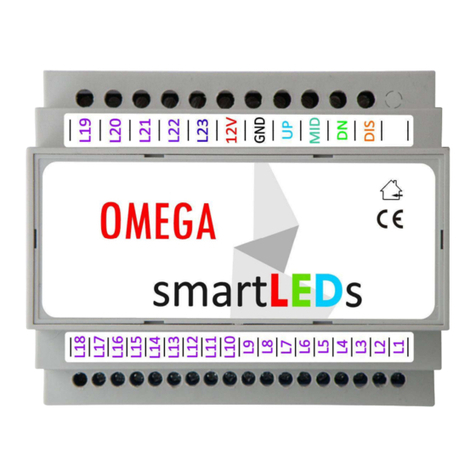
APACHETA
APACHETA smartLEDs OMEGA EXCLUSIVE user manual
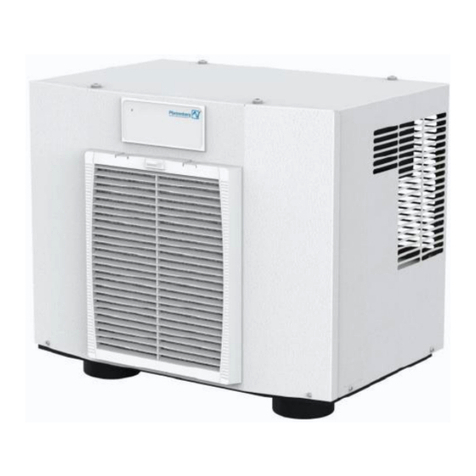
Pfannenberg
Pfannenberg DTT 6801 Series Original operating manual

Maxim Integrated
Maxim Integrated MAX3420E Programming guide
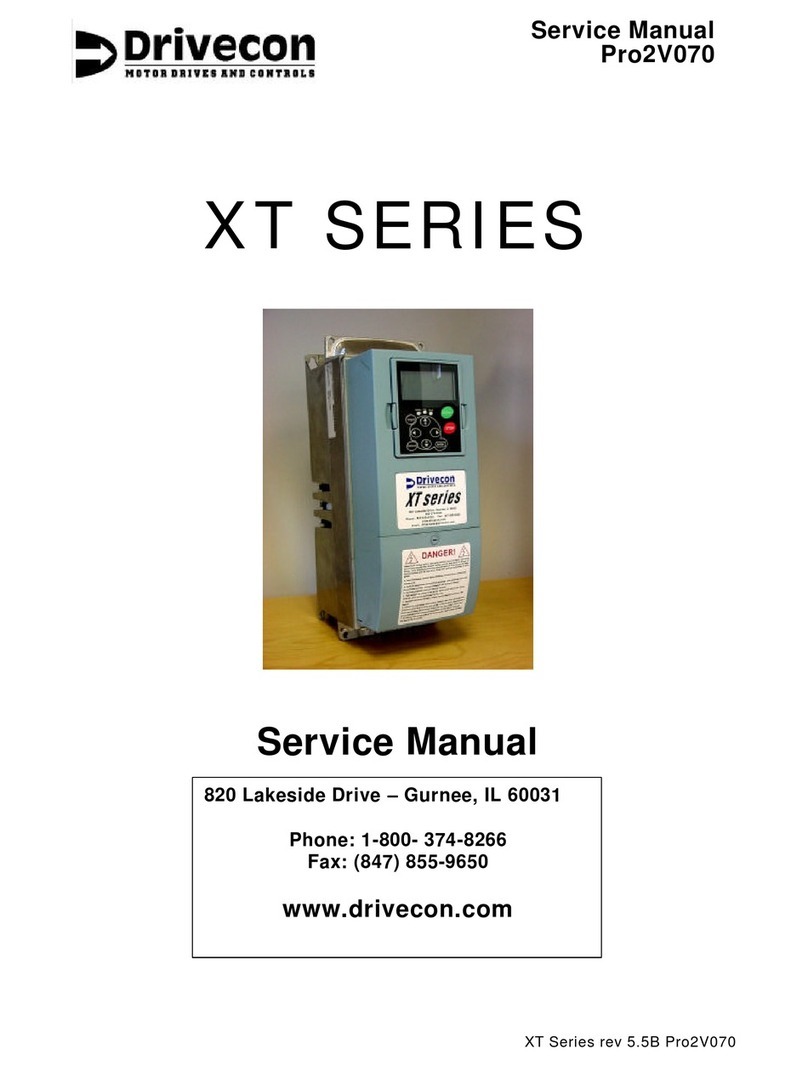
Drivecon
Drivecon XT Series Service manual
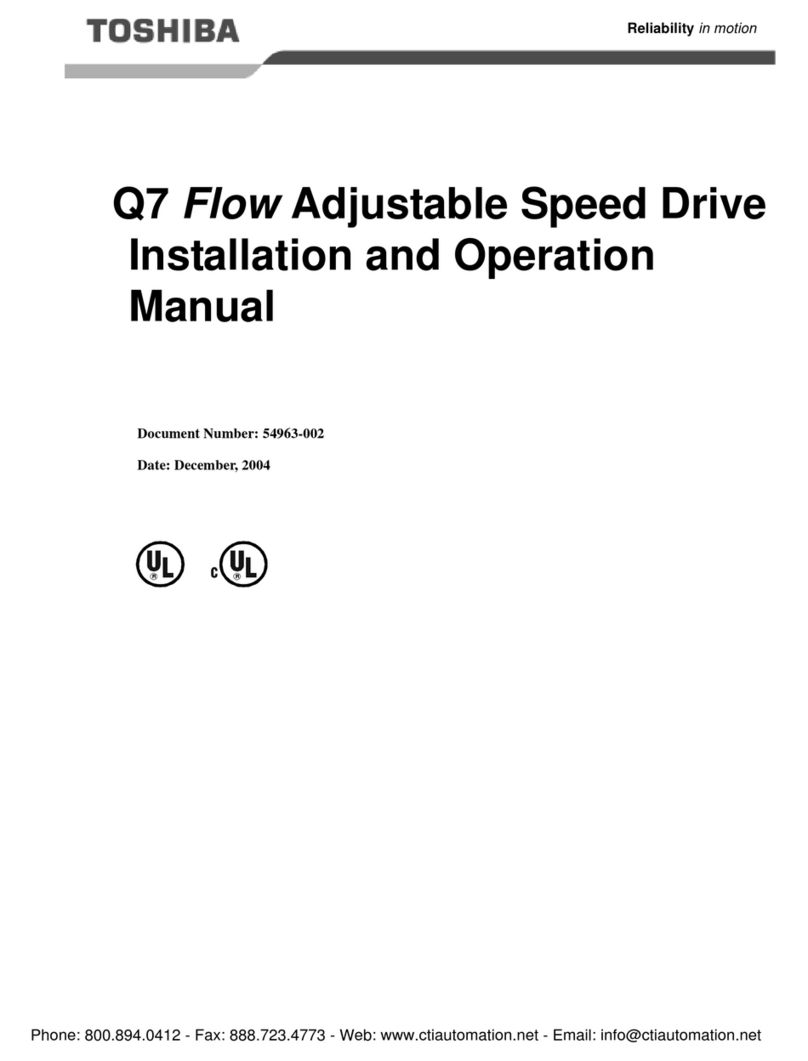
Toshiba
Toshiba Q7 Flow Installation and operation manual

